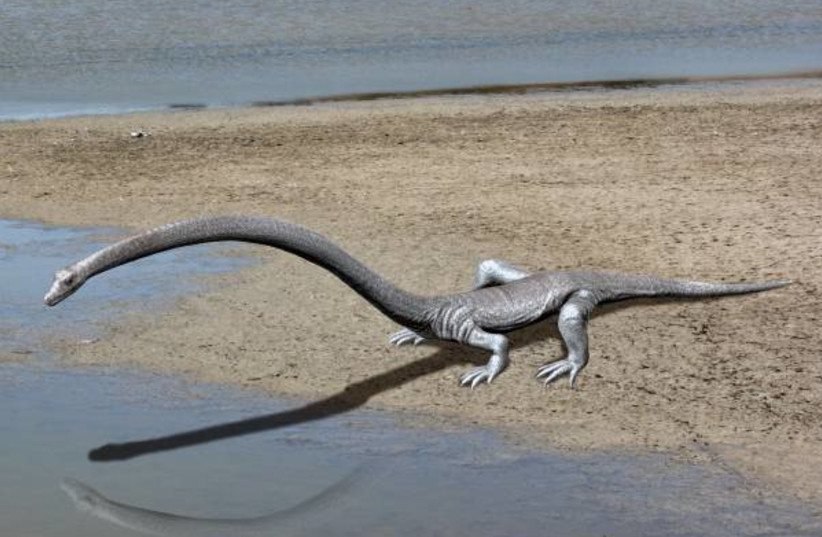Certain long-necked reptiles from the age of dinosaurs may have found this defining trait to have been a considerable weakness, with evidence showing that their necks were vulnerable to being attacked by predators who sometimes decapitated them, a recent study suggested.
The study concerned Tanystropheus, a species of marine reptile that lived in the Triassic era. Like many prehistoric reptiles, they had evolved to develop long necks, but this is the first time any evidence has been discovered suggesting that they could be a disadvantage.
The findings of this study were published in the peer-reviewed academic journal Current Biology.
Sticking your neck out: Long necks in the age of dinosaurs were an advantage and a weakness
Many animals have developed long necks over the course of evolution in order to serve a number of different purposes.
For giraffes, their long necks let them reach food from high trees. For some birds, having a long neck could either be to help with drinking and eating from the ground for birds with long legs or to rapidly jut the head forward to catch fish or dig into carrion.

In the age of dinosaurs, a number of long-necked animals also existed, such as the famous long-necked sauropods. But there were also some marine reptiles that had long necks, such as Tanystropheus, an aquatic or semiaquatic reptile very distantly related to birds and crocodiles. These long necks had 13 vertebrae and ribs, likely to be used in an ambush function by stiffening, waiting for prey and then flinging out rapidly to strike.
Evidently, though, this feature came with some downsides: A long neck is an equally long target, turning their great evolutionary advantage into an Achilles heal, or rather Achilles neck, as SciTechDaily referred to it. This is something researchers have hypothesized was the case for prehistoric animals for hundreds of years, but over the hundreds of millions of years of evolution that saw long necks become so prominent, there was never any evidence of this – until now.
The researchers behind the study examined the long neck in two specific Tanystropheus specimens. Here, not only is there evidence that something had bitten into the necks but there is evidence that biting the necks ended up completely decapitating them.
From the markings on the bones, researchers can see teeth had dug in and then pulled back, breaking through the neck – a behavior observed in some reptiles.
In addition, the fact that the punctures from the bite marks, piercing the bone, are so prominent and well-defined seems to indicate that this was by a predator and not a scavenger.
The researchers hypothesize that the part of the neck that was attacked was an ideal target, being in the midpoint far from the head but also not part of the thicker and more muscular base. However, more research is needed to see if this was a regular occurrence, aside from just these two examples.
But what is interesting about these reptiles is that the neck and head were largely completely unscathed aside from the bite mark that decapitated them.
"The fact that the head and neck are so undisturbed suggests that when they reached the place of their final burial, the bones were still covered by soft tissues like muscle and skin," Eudald Mujal of the Institut Català de Paleontologia Miquel Crusafont in Spain said in a statement.
"They were clearly not fed on by the predator. Although this is speculative, it would make sense that the predators were less interested in the skinny neck and small head and instead focused on the much meatier parts of the body. Taken together, these factors make it most likely that both individuals were decapitated during the hunt and not scavenged, although scavenging can never be fully excluded in fossils that are this old."
